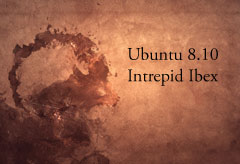With world-economies teetering somewhere between a nasty recession and full-on depression, more folks are turning to open source (free) software to meet their home computing needs.
If you've been Radified any length of time, you know that cloning programs are our specialty, especially when used as a tool to backup your system partition (where Windows resides) by creating an image file.
 So the question naturally becomes » What's the best free cloning program?
So the question naturally becomes » What's the best free cloning program?
I've tried many options, such as Macrium and O&O DiskImage Express, but never quite found what I was looking for .. until today, that is.
Perhaps I should interject by saying that, regarding the NOT-free solutions, I've found that Ghost, along with Image-for-Windows to be the best for-co$t disk-cloning tools. (By 'best' I mean » most reliable.) Ghost is also way faster than any other cloning product I've demo'ed .. if speed is important to you.
Lots of people also like True Image, but I had problems with it. (Errors I couldn't resolve.)
But what if you can't afford those apps? Then what? We still need an industrial-strength (nuclear-grade) backup tool. Enter Clonezilla. (Standing ovation.)
First, I'm not crazy about the name .. nor the website's design, especially the tiny menu on the left-side that I can barely read. (Update - looks like they fixed the tiny-menu problem after I posted this.)
Heck, I don't even like their logo (white Linux penguin inside orange penguin). But I *am* impressed with the tool itself .. now that I've had a chance to try it.
Yes, it's significantly more complicated to use than either Ghost or Image-for-Windows, but I don't feel this complexity is a barrier to those with a moderate degree of computer sophistication. (Such as the folks who frequent Radified.)
Note that .. a cloning program can (if used inadvertantly) trash your entire system and wipe out every every file on your hard drive .. with a single click. So you can't experiment like you can with other programs (.. such Photoshop Elements or Sound Forge, for example). In other words, you need to know wtf you're doing.
Perhaps I should begin by defining some terms.


